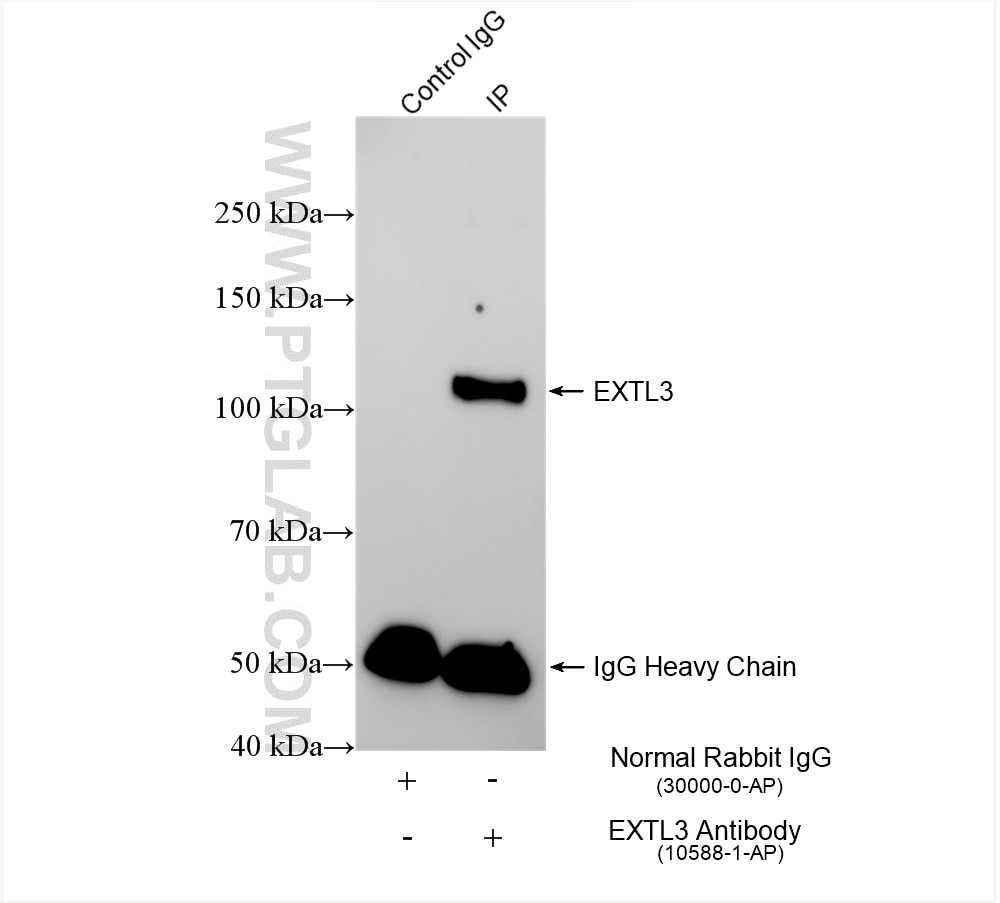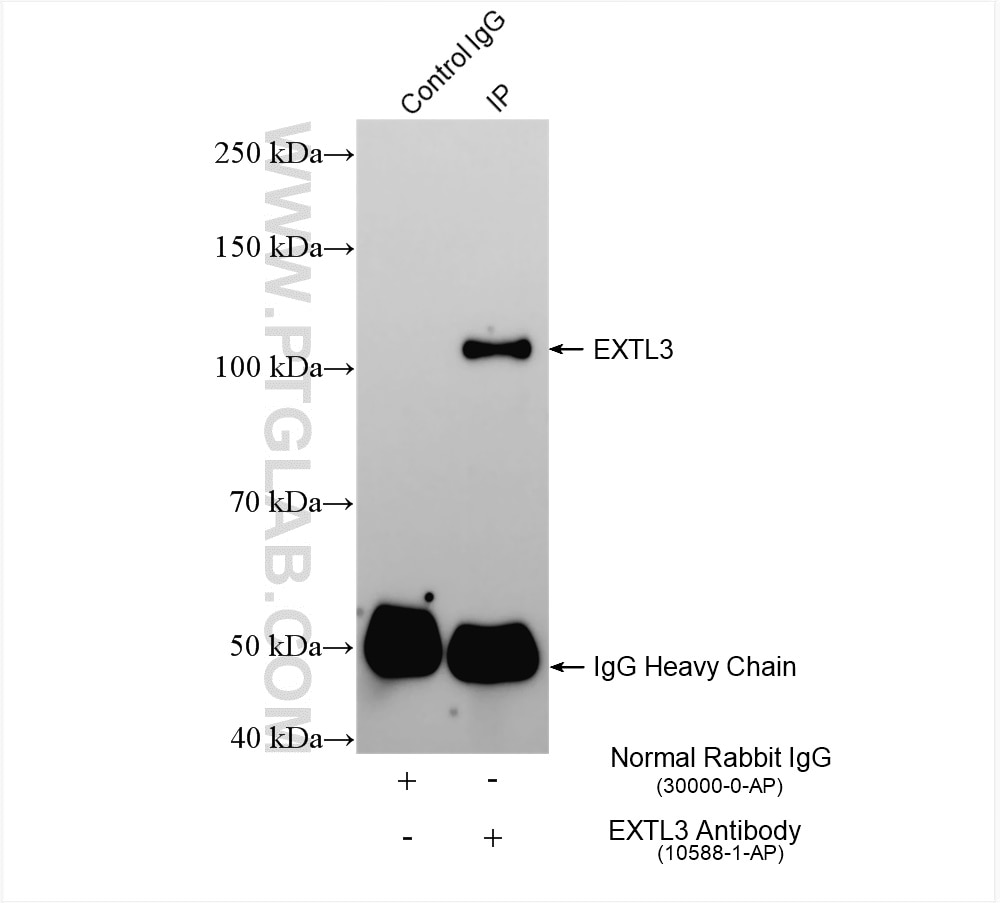EXTL3 Polyklonaler Antikörper
EXTL3 Polyklonal Antikörper für IP, ELISA
Wirt / Isotyp
Kaninchen / IgG
Getestete Reaktivität
human, Maus
Anwendung
WB, IF, IP, ELISA
Konjugation
Unkonjugiert
Kat-Nr. : 10588-1-AP
Synonyme
Geprüfte Anwendungen
| Erfolgreiche IP | HEK-293T-Zellen, Maus-Pankreasgewebe |
Empfohlene Verdünnung
| Anwendung | Verdünnung |
|---|---|
| Immunpräzipitation (IP) | IP : 0.5-4.0 ug for 1.0-3.0 mg of total protein lysate |
| It is recommended that this reagent should be titrated in each testing system to obtain optimal results. | |
| Sample-dependent, check data in validation data gallery | |
Veröffentlichte Anwendungen
| WB | See 2 publications below |
| IF | See 2 publications below |
Produktinformation
10588-1-AP bindet in WB, IF, IP, ELISA EXTL3 und zeigt Reaktivität mit human, Maus
| Getestete Reaktivität | human, Maus |
| In Publikationen genannte Reaktivität | human, Maus |
| Wirt / Isotyp | Kaninchen / IgG |
| Klonalität | Polyklonal |
| Typ | Antikörper |
| Immunogen | EXTL3 fusion protein Ag0936 |
| Vollständiger Name | exostoses (multiple)-like 3 |
| Berechnetes Molekulargewicht | 105 kDa |
| Beobachtetes Molekulargewicht | 105 kDa |
| GenBank-Zugangsnummer | BC006363 |
| Gene symbol | EXTL3 |
| Gene ID (NCBI) | 2137 |
| Konjugation | Unkonjugiert |
| Form | Liquid |
| Reinigungsmethode | Antigen-Affinitätsreinigung |
| Lagerungspuffer | PBS with 0.02% sodium azide and 50% glycerol |
| Lagerungsbedingungen | Bei -20°C lagern. Nach dem Versand ein Jahr lang stabil Aliquotieren ist bei -20oC Lagerung nicht notwendig. 20ul Größen enthalten 0,1% BSA. |
Hintergrundinformationen
Exostosin like glycosyltransferase 3 (EXTL3), also known as RPR, is located at chromosome 8p21.1 and composed of 919 amino acids, making it the longest member of the EXT family (PMID: 35676258). EXTL3 encodes the glycosyltransferases responsible for the biosynthesis of the backbone structure of heparan sulfate (HS) (PMID: 24128412). EXTL3 has been identified as a receptor molecule for regenerating islet-derived (REG) protein ligands, which have been shown to stimulate islet β-cell growth. Mutations in EXTL3 could lead to skeletal dysplasia, developmental delay, and severe immune deficiency (PMID: 28148688). The predicted molecular weight is 105 kDa, but we detected the band at 65 kDa perhaps due to alternative splicing (PMID: 14618397).
Protokolle
| PRODUKTSPEZIFISCHE PROTOKOLLE | |
|---|---|
| IP protocol for EXTL3 antibody 10588-1-AP | Protokoll herunterladen |
| STANDARD-PROTOKOLLE | |
|---|---|
| Klicken Sie hier, um unsere Standardprotokolle anzuzeigen |
Publikationen
| Species | Application | Title |
|---|---|---|



